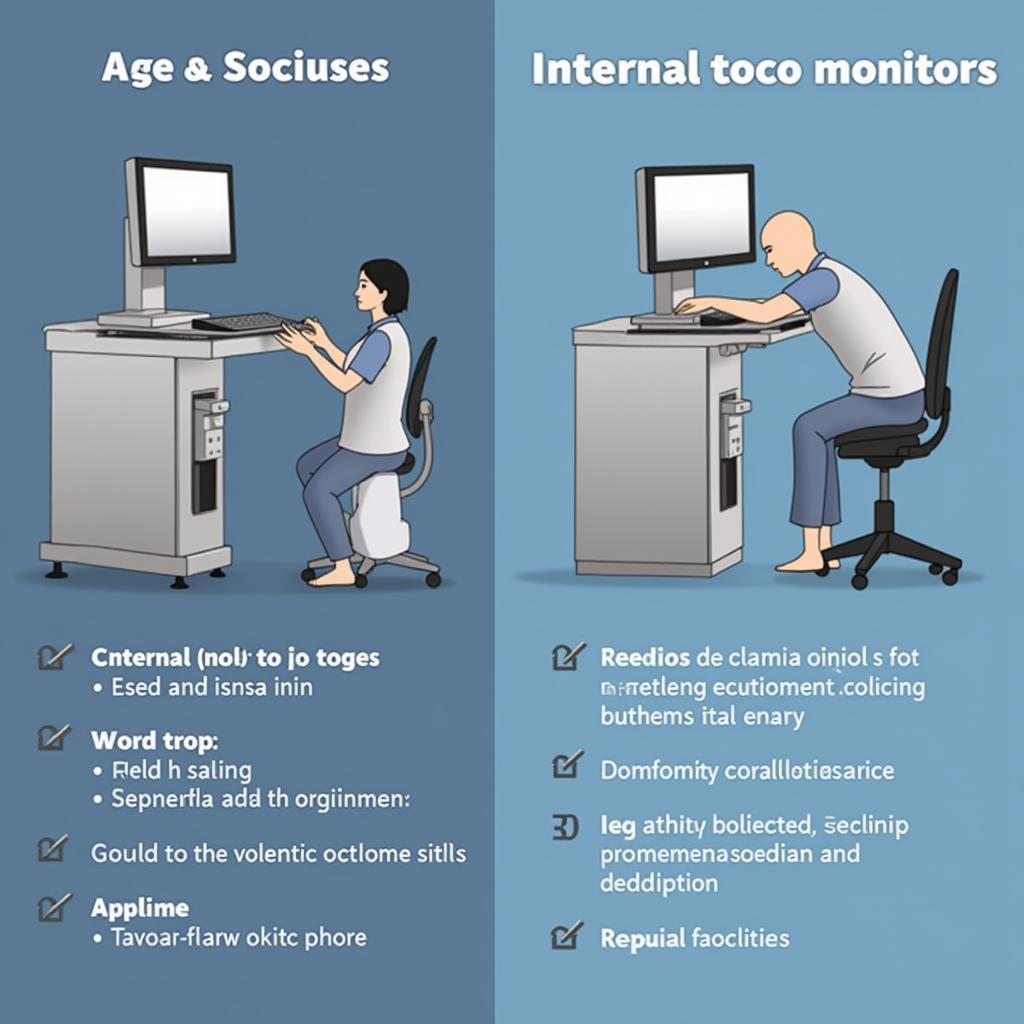The Toco Hospital Monitor is a crucial piece of equipment in labor and delivery units worldwide. It provides essential information about both the mother and baby, allowing medical professionals to make informed decisions throughout the birthing process. This comprehensive guide will explore the functionalities, benefits, and importance of the toco monitor in modern obstetrics.
What is a Toco Hospital Monitor?
A toco hospital monitor, also known as a cardiotocograph (CTG), is a device used to monitor fetal heart rate (FHR) and uterine contractions during pregnancy and labor. It’s a non-invasive tool that provides continuous data, allowing healthcare professionals to assess the well-being of both mother and baby. The monitor typically consists of two belts placed around the mother’s abdomen: one to measure uterine activity and the other to detect the fetal heartbeat.
The information gathered by the toco monitor is displayed on a screen, showing the FHR and uterine contraction patterns in real-time. This visual representation helps doctors and nurses identify any potential issues, such as fetal distress or abnormal contractions. Early detection of these problems can be crucial in preventing complications and ensuring a safe delivery. You can learn more about hospital procedures, such as those related to medical gas pipeline systems in hospitals.
 Toco Monitor in Use During Labor
Toco Monitor in Use During Labor
How Does a Toco Monitor Work?
The toco monitor utilizes two main technologies: ultrasound and tocodynamometry. The ultrasound transducer emits high-frequency sound waves that bounce off the fetal heart, allowing the monitor to calculate the FHR. Tocodynamometry measures the pressure changes in the mother’s abdomen caused by uterine contractions. This data is then translated into a graphical representation, allowing for continuous monitoring of both the baby’s heart rate and the strength and frequency of contractions. For those interested in different birthing options, you can find information about hospitals near me that do water births.
Benefits of Using a Toco Hospital Monitor
The toco hospital monitor offers several key benefits in obstetrical care:
- Early Detection of Fetal Distress: The monitor can alert medical staff to potential problems like fetal hypoxia (lack of oxygen) or umbilical cord compression.
- Monitoring Uterine Activity: Accurate assessment of contraction strength and frequency helps manage labor effectively.
- Reduced Intervention: By providing continuous monitoring, the toco can sometimes reduce the need for invasive procedures.
- Reassurance for Mothers: Seeing the real-time data can provide peace of mind for expectant mothers.
- Data Recording: The toco monitor creates a permanent record of the labor, which can be valuable for future reference.
 Fetal Heart Rate Monitoring on Toco Monitor Display
Fetal Heart Rate Monitoring on Toco Monitor Display
Interpreting Toco Monitor Readings
Interpreting the data displayed on the toco monitor requires specialized training. Medical professionals look for specific patterns in the FHR and uterine contractions to assess fetal well-being. Factors such as baseline heart rate, variability, accelerations, and decelerations are all considered. Any significant deviations from normal patterns may warrant further investigation or intervention. Understanding what happens in a hospital environment can be helpful, as in the case of a mercy hospital lockdown.
Variations of the Toco Monitor
While the basic principles remain the same, there are different types of toco monitors available:
- External Toco Monitor: This is the most common type, using external belts placed on the mother’s abdomen.
- Internal Toco Monitor: In certain situations, an internal monitor may be used, involving a small electrode attached to the baby’s scalp.
 Different Types of Toco Monitors
Different Types of Toco Monitors
Have you ever wondered, do hospital rooms have cameras in texas? This is a common question for many patients.
The Toco Monitor and Patient Care at San Jose Hospital
At San Jose Hospital, we prioritize patient safety and comfort. Our state-of-the-art labor and delivery unit is equipped with advanced toco monitors to ensure continuous monitoring during labor. Our experienced medical team is skilled in interpreting toco monitor readings and providing individualized care to each patient. We are committed to providing a safe and positive birthing experience. Learn more about hospitals like the TB hospital Lima.
Conclusion
The toco hospital monitor plays a vital role in modern obstetrics, providing crucial information about fetal well-being and uterine activity. This technology allows medical professionals to detect potential complications early, leading to better outcomes for both mothers and babies. At San Jose Hospital, we utilize advanced toco monitors to ensure the highest standard of care during labor and delivery.
FAQ
- Is the toco monitor painful? No, the toco monitor is non-invasive and generally not painful.
- How long is the toco monitor used? It is typically used throughout labor.
- Can I move around with the toco monitor? Limited movement is usually possible.
- What if the toco monitor shows a problem? Your medical team will assess the situation and take appropriate action.
- Are there any risks associated with the toco monitor? The risks are minimal.
Contact us: Phone Number: 02437655121, Email: [email protected] Or visit us at: 298 Cau Dien St., Minh Khai, Bac Tu Liem, Hanoi, Vietnam. We have a 24/7 customer service team.